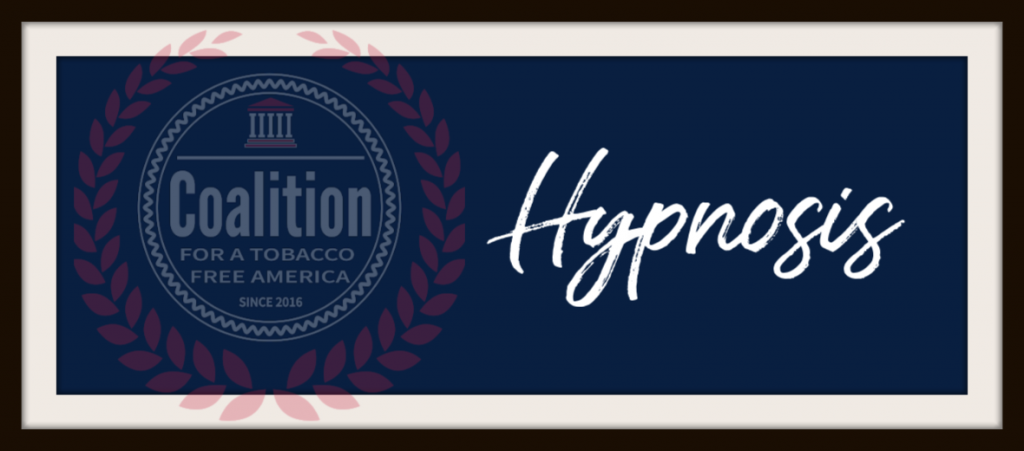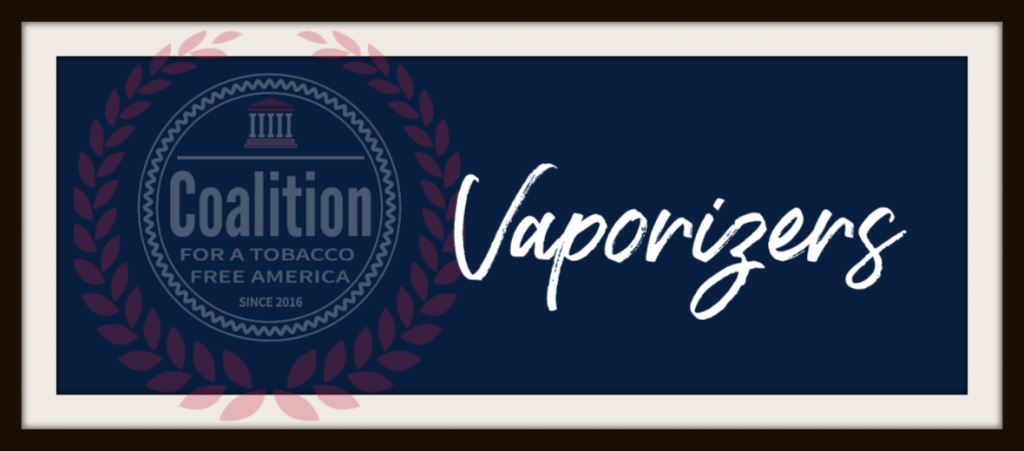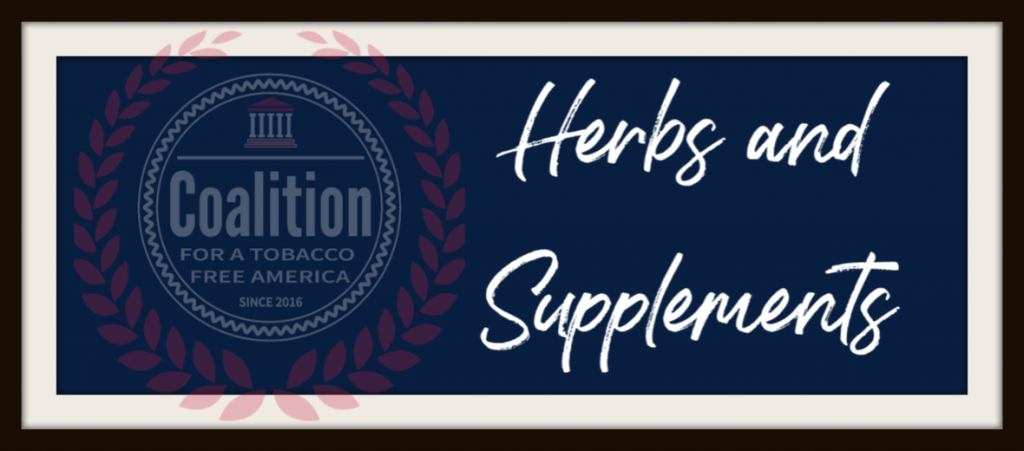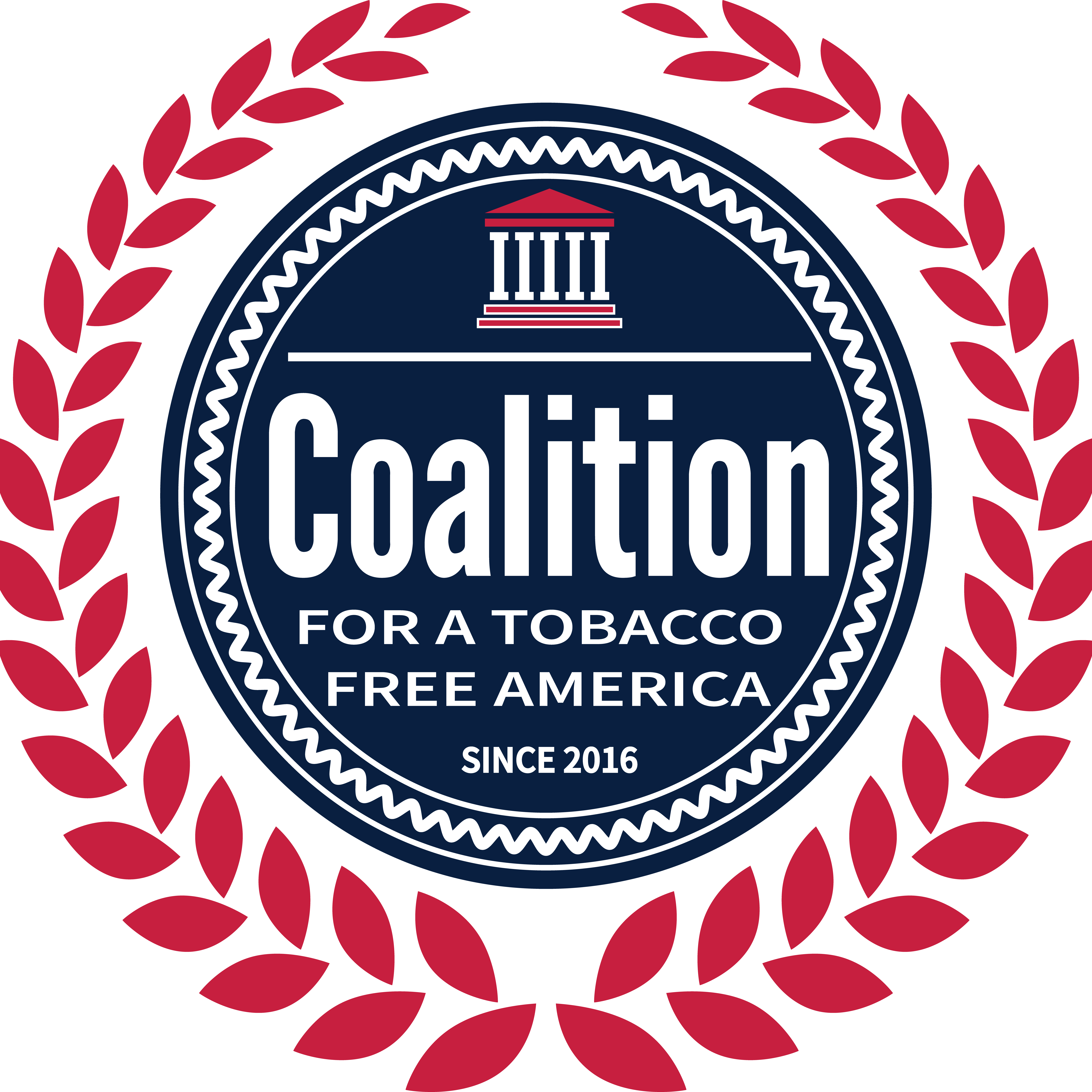Are you ready to quit smoking? Smoking is the leading cause of preventable death in the US. According to the CDC.
Take a look at the methods below as ways to quit smoking.

This medication can help you quit smoking by replacing the nicotine in cigarettes. The nicotine in tobacco is an important part of cigarette addiction. When you stop smoking, your nicotine levels drop quickly. This drop can cause withdrawal symptoms such as craving tobacco, nervousness, irritability, headache, weight gain, and difficulty concentrating. – Source: WebMD
A study on the efficacy of nicotine patches can be found here.

Nicotine replacement therapy (NRT) can help smokers to quit smoking. Nicotine chewing gum has attracted the attention from pharmaceutical industries to offer it to consumers as an easily accessible NRT product. However, the bitter taste of such gums may compromise their acceptability by patients. This study was, therefore, designed to develop 2 and 4 mg nicotine chewing gums of pleasant taste, which satisfy the consumers the most. – Source: NCBI
Study on the nicotine gum addiction can be found here.

The nicotine lozenge is a nicotine replacement therapy (NRT) that comes in the form of a small, candy-like, sugar-free tablet in flavors like cinnamon, fruit, and mint. When a nicotine lozenge is placed in the mouth and allowed to dissolve over the course of 20 to 30 minutes, nicotine is absorbed into the bloodstream, relieving short-term cravings to smoke.
You cannot smoke while using nicotine lozenges, so many people use them as a quit aid, though there are many things you should know and understand about these lozenges before using them to help you quit smoking. – Source: Very Well Mind
A study on the Efficacy and Safety Study of Nicotine Mint Lozenges can be found here.

According to WebMD, Hypnosis is defined as an altered state of awareness in which you appear to be asleep or in a trance. Clinical hypnosis may be used to treat certain physical or psychological problems. For instance, it is frequently used to help patients control pain. It is also used in a wide range of other conditions such as weight issues, speech disorders, and addiction problems.
There is debate about how hypnosis works. Some people believe that when you are hypnotized, you relax and concentrate more, and are more willing to listen to suggestions — such as giving up smoking, for example.
During hypnosis for smoking cessation, a patient is often asked to imagine unpleasant outcomes from smoking. For example, the hypnotherapist might suggest that cigarette smoke smells like truck exhaust, or that smoking will leave the patient’s

Some people choose this method because it is essentially free from side effects. Very thin needles are placed in pressure points in the ears to help with cravings and cause relaxation.
While there is at least one study showing modest success in using acupuncture to treat smoking, the evidence, in our modern world of evidence-based medicine, is limited. There is no reason not to try acupuncture to stop smoking, but your chances of quitting are best if acupuncture is part of a broader treatment program.
This method has been used to quit smoking, but there’s little evidence to show that it works. Acupuncture for smoking is usually done on certain parts of the ears. Source: American Cancer Society
A study on acupuncture can be found here.

An electronic cigarette is a battery-operated device that emits doses of vaporized nicotine, or non-nicotine solutions, for the user to inhale. It aims to provide a similar sensation to inhaling tobacco smoke, without the smoke. Source: Medical News Today
While certain entities including the FDA throughout our country have deemed this a “Tobacco Product”, it holds many possible advantages over traditional combustable tobacco. We understand some of these devices provide nicotine, and yes nicotine can be derived through the tobacco plant. However Nicotine is also prevalent within a multitude of other vegetation which is not demonized such as strawberries, tomatoes, eggplant, and cauliflower to name but a few.
Based on our own individual data combing we can not in good conscience rule it out as a possible alternative or substitute for the individual who has attempted all other methods. While we do not have the data for actual long term use as it’s only been widely available since 2007, many scientific studies have deemed it as much as 95% safer than smoking: Source Public Health England
While as our mission statement confirms “Our #1 Goal is to help people quit and or never start smoking.” This is not an easy topic and in no way wish for anyone to start using this method for any use, other than a person who is attempting to quit smoking.
***Click here for a growing list of public statements regarding e-cigarettes.***

Nearly half of the cigarettes consumed in the United States are smoked by people dealing with a mental illness, according to the Substance Abuse and Mental Health Services Administration. The federal agency says that rates of smoking are disproportionately higher — a little more than double — among those diagnosed with mental illness than among the general population.
It is widely accepted that the nicotine in cigarettes is highly addictive, but people struggling with mental health issues often turn to cigarettes for reasons that go beyond their addictive qualities. For instance, many people smoke as a coping mechanism to deal with difficult feelings. In addition, despite their negative health effects, cigarettes are still largely viewed by society as an “acceptable” addiction in comparison with other substances. Source: Counseling Today
To speak with someone about quitting smoking, the following resources are available:
National Cancer Institute Live Chat Line
National Network of Tobacco Cessation Quitline: Call 1-800-QUITNOW (1-800-784-8669).
SmokefreeTXT
Search for Smart Phone Apps

Cold turkey is the method most smokers try first when they decide to quit. When most people think of “cold turkey” visions of suffering come to mind as your body adjusts to the change. There are mixed schools of thought when it comes to this method.
According to Dr. J. Taylor Hays, a Mayo Clinic College of Medicine professor and director of the Mayo Clinic Nicotine Dependence Center,said that quitting cold turkey, “to quit abruptly with no treatment support or replacement medications,” He goes on to say, “This idea is closely tied to a long-standing misconception that the most effective method for quitting is to ‘white knuckle it’ with willpower alone,”
Over the past 25 years, studies show that only 3-5 out of 100 people are able to quit smoking this way for any significant amount of time. However, a study published in the Annals of Internal Medicine in 2016 called, Gradual Versus Abrupt Smoking Cessation: A Randomized, Controlled Noninferiority Trial,” concluded “Quitting smoking abruptly is more likely to lead to lasting abstinence than cutting down first, even for smokers who initially prefer to quit by gradual reduction. “
After you quit smoking, a lot of good things happen to your body pretty quickly. Within 20 minutes, your heart rate and blood pressure go down. In 12 hours, the carbon monoxide levels in your body go back to normal. And within a couple of weeks, your circulation improves and you’re not coughing or wheezing as often. Source: WebMD
The symptoms of nicotine withdrawal include:
- Anxiety
- Irritability
- Headache
- Trouble sleeping
- Fatigue
- Hunger

There’s little scientific evidence to support the use of homeopathicaids and herbal supplements as stop-smoking methods. Because they are marketed as dietary supplements (not drugs), they don’t need FDA approval to be sold. This means that the manufacturers don’t have to prove they work, or even that they’re safe.
Be sure to look closely at the label of any product that claims it can help you stop smoking. No dietary supplement has been proven to help people quit smoking. Most of these supplements are combinations of herbs, but not nicotine. They have no proven track record of helping people to stop smoking. Source: American Cancer Society
The most common herbs cited to help quit smoking are:
Ginseng
In a research article published in Neuropsychopharmacology, drinking Ginseng tea may weaken the effect of dopamine, a neurotransmitter in the brain that is associated with pleasure and is released when smoking tobacco.
St. John’s Wort
St. John’s Wort is an herb that is usually used to treat depression. Researchers are looking at its effect on depression that results from quitting smoking. While St. John’s Wort may not help you quit, it may help make the transition easier.
Although St. John’s Wort appears to be reasonably safe when taken alone, it can interfere with the effectiveness of prescription and over-the-counter medications. This includes antidepressants, drugs to treat HIV infections and AIDs, drugs to prevent organ rejection for transplant patients, and oral contraceptives.
St. John’s wort is not recommended for pregnant or nursing women, children, or people with bipolar disorder, or liver or kidney disease.
Lobelia
Lobelia is commonly used as a homeopathic medication for the treatment of asthma. In 1993, the Federal Dri]ug Administration prohibited the sale of these products as smoking cessation products, citing alack of evidence in their efficacy.
Adverse reactions to the Lobelia plant
Fruits and vegetables
While not a “stop smoking” aid, a paperin the journal Nicotine and Tobacco Research, is the first longitudinal study on the relationship between fruit and vegetable consumption and smoking cessation.
According to the University of Buffalo, the study found that smokers who consumed the most fruit and vegetables were three times more likely to be tobacco-free for at least 30 days at follow-up 14 months later than those consuming the lowest amount of fruits and vegetables. These findings persisted even when adjustments were made to take into account age, gender, race/ethnicity, education, household income, and health orientation.
The researchers also found that smokers with higher fruit and vegetable consumption smoked fewer cigarettes per day As well as, waited longer to smoke their first cigarette of the day and scored lower on a common test of nicotine dependence
Before starting any diet change, please be sure to speak with your doctor.

What is Snus?
Snus has a long history in Sweden, dating back 200 years. It is a moist smokeless tobacco pouch that you place under your top lip and can remain there for 15-45 minutes. It is unlike American Chewing tobacco in that there is no need to spit. This is because snus is made differently. American chewing tobacco is fire cured, Swedish Snus is pasteurized, this takes out the harshness of the juice and allows you to swallow. It is because of this process that many people use snus in places where smoking is not allowed and spitting is frowned upon.
Snus can be purchased loose or in portions. Snus portions come in different sizes and types. Here’s a rundown of some of the most common types of snus: (Source: The Northerner Blog)
- Original Portion – Original portions tend to be slightly moist, thus making the onset of the nicotine faster. Although they don’t last as long as white portions, they can provide a quick nicotine kick.
- White Portion – White portion snus is much drier and therefore takes longer to absorb than an original portion. However, they can last for quite a long time.
- Mini Portion – Mini portions are much smaller than original and white portions, and they have less nicotine. Despite this, they are extremely discreet and can be used in work situations without anyone noticing.
- Long Portion – These are a new type of portion which aims to be longer than it is wide. Long portions fit comfortably in the lip and are a great way to discreetly enjoy a full-sized portion.
Sale of snus is illegal in all the European Union countries except Sweden. Local varieties of snus, growing in popularity in the United States, have been seen as an alternative to smoking, chewing, and dipping tobacco. However, US-manufactured snus does not have the same production standards or ingredients as Swedish snus, and typically uses significant amounts of sweeteners.
Can you quit smoking with Snus?
To answer this question, we have to look at the country of origin of Snus, Sweden. Cigarette smoking has fallen in Sweden in the last 30 years, while the use of snus has risen. One in five men and one in 25 women use snus. Swedish people smoke less and suffer from less tobacco-related illness and death even though they use as much tobacco as other countries and even have the lowest tobacco-related deaths of any developed country. Source
Snus is a smokeless tobacco product. It contains nicotine. However, if you compare it to cigarettes, snus seems less dangerous. “It’s difficult to say that something is as toxic for you as smoking a cigarette unless you’re starting to talk about ingesting cyanide or rat poison,” says Erika Sward, assistant vice president of national advocacy for the American Lung Association.
A study called “Effect of smokeless tobacco (snus) on smoking and public health in Sweden” concluded, “Snus availability in Sweden appears to have contributed to the unusually low rates of smoking among Swedish men by helping them transfer to a notably less harmful form of nicotine dependence.”
The study goes on to say, Snus helped people to quit smoking more than popular NRTs such as gum and patches. The same study found that 71 percent of daily smokers who also use snus were able to quit smoking, compared to 54 percent of non-snus users. Sixty-two percent of men who quit smoking reported using snus as a cessation aid. This contrasts with only 38 percent who said they used NRT products.
Does snus cause cancer?
According to Swedish Match, manufactures and distributors of Swedish snus, there been many studies done and there has been no correlation between snus and cancer. Several studies have been done on the risks of cancer of the mouth, throat, Oesophageal, gastric system, pancreas, skin, and research into the mortality of cancer from snus. In all studies, they found that the use of snus was not a risk factor in these cases. To view individual studies please click here.
According to the Swedish Match website, they break down their research results on Swedish snus:
- Use of Swedish snus is not a risk factor for oral cancer.
- No association has been established between the use of Swedish snus and neck and esophagus cancer.
- There is no association between snus use and gastric cancer.
- There is no significant increased risk for cutaneous squamous cell carcinoma (CSCC) associated with the use of snus.
- Smokeless tobacco (snus and chewing tobacco) may be a risk factor for pancreatic cancer. However, in this study, the use of smokeless tobacco was not associated with statistically significant increases in risk of cancers of the oral cavity/pharynx, esophagus, stomach, lung, kidney or bladder.
- The mortality from cancer is not increased among Swedish snus users.
According to Kenneth Warner, director of the University of Michigan Tobacco Research Network, “The Swedish government has studied this stuff to death and, to date, there is no compelling evidence that it has any adverse health consequences. … Whatever they eventually find out, it is dramatically less dangerous than smoking.”
However, there is much debate about Snus among health professionals. On one hand, (such as Canada and the EU) the thought is focused more on harm reduction. While the use of nicotine products should decline as a whole, the health of adults who choose to use recreational nicotine should be encouraged to switch to a less harmful product. The other side does not want any nicotine product to be used and focus should be more on quitting totally by using approved NRTs.
A report commissioned by Public Health England in 2014, looked at another avenue for tobacco harm reduction, electronic cigarettes, examined the case of snus as “a unique natural experiment in the impact of a socially accepted, non-medical, affordable and easily accessible reduced harm product on the prevalence of tobacco smoking”. The conclusion was “Although controversial, the Swedish natural experiment demonstrates that despite dual-use and primary uptake of the reduced-harm product by young people, availability of reduced-harm alternatives for tobacco smokers can have a beneficial effect. While snus is not likely to become a legal or indeed politically viable option in the UK, this data proves the concept that harm reduction strategies can contribute to significant reductions in smoking prevalence.”
Quitting smoking is very difficult. While it is important to look at ways to alleviate the physical symptoms of nicotine withdrawal, it is also important to treat the psychological aspects of smoking as well. Finding support from a friend or group can be very helpful with quitting.
- Worldwide, tobacco use causes more than 7 million deaths per year. If the pattern of smoking all over the globe doesn’t change, more than 8 million people a year will die from diseases related to tobacco use by 2030.
- Cigarette smoking is responsible for more than 480,000 deaths per year in the United States, including more than 41,000 deaths resulting from secondhand smoke exposure. This is about one in five deaths annually, or 1,300 deaths every day.
- On average, smokers die 10 years earlier than nonsmokers.
- If smoking continues at the current rate among U.S. youth, 5.6 million of today’s Americans younger than 18 years of age are expected to die prematurely from a smoking-related illness. This represents about one in every 13 Americans aged 17 years or younger who are alive today.
- The best way to quit smoking is to never start at all. There are many different ways to help you quit. While there is no one method that works for every smoker, many people have been helped by using one (or more) of the methods below.
Please be sure to check with your doctor before starting any treatment.

